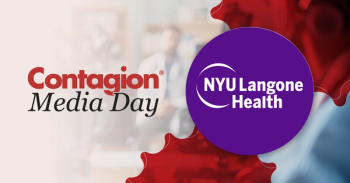
How Long Does SARS-CoV-2 Stay on Surfaces?
The NIH has shared new information on the stability of SARS-CoV-2 virus on a variety of surfaces.
The proven stability of other types of coronaviruses led experts to conclude that the novel coronavirus (SARS-CoV-2) would also remain
Now, the National Institute of Health (NIH) has
A study conducted by experts from the US Centers for Disease Control and Prevention (CDC), NIH, UCLA, and Princeton University investigated how long the virus remained infectious on different surfaces. The investigators found that SARS-CoV-2 is detectable in aerosols for up to 3 hours, on copper up to 4 hours, up to 24 hours on cardboard, and up to 3 days on plastic and stainless steel.
“The results provide key information about the stability of SARS-CoV-2, which causes COVID-19 disease, and suggests that people may acquire the virus through the air and after touching contaminated objects,” according to an NIH press release.
The study team compared the environmental qualities of SARS-CoV-2 with those of SARS-CoV-1. While SARS-CoV-1 (the virus that caused severe acute respiratory syndrome) infected over 8000 people in 2002 and 2003, the virus was subsequently contained before reaching anything approaching the spread of SARS-CoV-2.
“SARS-CoV-1 is the human coronavirus most closely related to SARS-CoV-2. In the stability study the 2 viruses behaved similarly, which unfortunately fails to explain why COVID-19 has become a much larger outbreak,” the NIH press release indicated.
The NIH did offer insight on at least some of why the outbreaks have been so different. According to the investigators, it appears individuals could be spreading SARS-CoV-2 prior to recognizing symptoms. In this case, disease control measures which halted SARS-CoV-1 would be less impactful.
Additionally, secondary cases of SARS-CoV-2 transmission appear to be taking place within the community more often than in health care environments. This was not the case for SARS-CoV-1. But, health care settings are also sites for secondary transmission of SARS-CoV-2, given the stability of the virus on surfaces and in aerosols.
The
Due to the viral nature of COVID-19, clinicians may be able to reduce health care transmission risk by conducting initial screening through
The NIH statement concludes by noting that the study supports existing guidance that the precautions taken for other respiratory viruses apply to SARS-CoV-2.
People should avoid close contact with those who are ill, stay home when themselves sick, and avoid touching their faces.
Individuals will also help prevent spread of SARS-CoV-2 by covering coughs or sneezes with tissues and cleaning regularly touched household surfaces.
For the most recent case counts in the COVID-19 outbreak, check out the Contagion®
On March 25, 2020, at 6PM ET, Contagion® is hosting a live CME webinar on what clinicians need to know amid the COVID-19 pandemic. Register
Newsletter
Stay ahead of emerging infectious disease threats with expert insights and breaking research. Subscribe now to get updates delivered straight to your inbox.



















































































































































































































































































